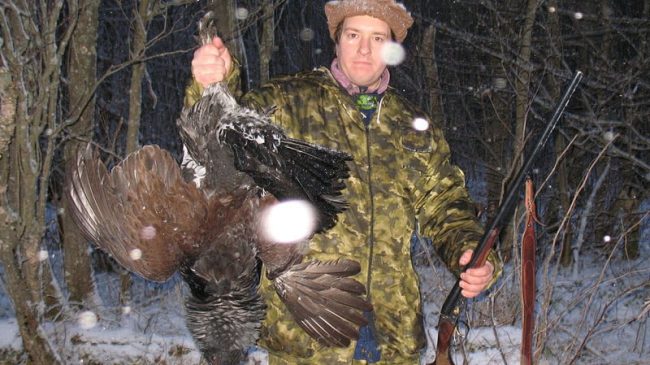The lesser prairie chicken, which was listed under the Endangered Species Act two weeks ago, just got some more bad news. On Thursday, three environmental pressure groups-Center for Biological Diversity, Defenders of Wildlife, and Wild Earth Guardians-filed an intent to sue the U.S. Fish & Wildlife Service over a conservation plan for the bird the agency approved at the time of listing. Ironically, while these groups claim the lawsuit will help the prairie chicken, a win will actually be detrimental to the species by discouraging landowners from conserving it. With almost all of the prairie chicken’s habitat in private hands, landowners are the key to the bird’s conservation.
The lesser prairie chicken is a big concern for landowners and businesses in the bird’s range, which includes large swaths of New Mexico, Texas, Colorado, Oklahoma and Kansas. The oil, gas, and agriculture industries are worried that protection of the prairie chicken could impose huge costs on them, as are the range states, which rely heavily on the employment and taxes provided by these industries.
In an attempt to protect the prairie chicken without imposing too high a burden on businesses and landowners, two separate plans have been developed-one has been approved and is the target of the lawsuit, and one is awaiting approval-that seek to lessen human impacts on prairie chicken habitat. These plans aim to offset impacts, such as oil and gas drilling, by allowing the businesses to purchase mitigation “credits” from landowners who are creating or maintaining habitats for the prairie chicken on other sites. Oil and gas companies benefit since they can continue their drilling projects, property-owners can gain revenue by selling the credits, and the prairie chicken also wins as landowners are compensated for providing mitigation habitat.
The linchpin for endangered species conservation is private lands because this is where nearly 80% of these species have some or all of their habitat, compared to 50% for federal land. Unfortunately, the Endangered Species Act’s harsh penalties–$100,000 fine and/or one year in jail for harming a species or even its habitat-have turned endangered species into financial liabilities. As a result, landowners seek to reduce their liability by getting rid of the species and their habitat through practices known as “shoot, shove, and shut-up” and “scorched earth.” This is why the ratio of declining to improving species on private land is 9 to 1, whereas on federal lands the ratio is 1.5 to 1.
The way to turn this around is to remove the penalties entirely and replace them with financial incentives, such as through the U.S. Department of Agriculture’s Conservation Reserve Program. Landowners and businesses in the lesser prairie chicken’s range are acutely aware of the threat the bird poses to their livelihoods and would prefer an incentive-based approach without penalties, as shown in numerous published scholarly surveys of landowners across the country in regions with endangered species. While the two mitigation and conservation plans for the prairie chicken address the incentives side of the equation, they leave untouched the penalties because that would require an act of Congress.
The second best option, embodied by both of the current prairie chicken plans, is to soften the Endangered Species Act’s impact by creating compensation mechanisms for those who provide habitat and a more predictable regulatory process for those impacting habitat.
Unfortunately, the signal the lawsuit sends to landowners and businesses is that even if they commit huge amounts of money and land-in the case of the already-approved prairie chicken plan, $21 million to date and as much as $250 million over the next ten years-they still may not be safe from clobbering by the Endangered Species Act. This has a chilling effect on the willingness of landowners and business to conserve endangered species.
The reality of endangered species conservation lies not with lawsuits, and far from the comfortable offices of litigious pressure groups who engage in “paper” conservation. The reality of endangered species conservation lies with private landowners who, day-in and day-out, are working hard on the land and who know better than any bureaucrat or activist what’s on their land, including endangered species. Most landowners are proud conservationists, patriotic citizens, and, but for the Endangered Species Act, willing to conserve endangered species.
If the lawsuit against the approved prairie chicken conservation plan succeeds it will be back to business as usual under the Endangered Species Act. But punishing these landowners, denying them compensation, and putting legal obstacles in their way is the surest way to doom endangered species, including the lesser prairie chicken.
